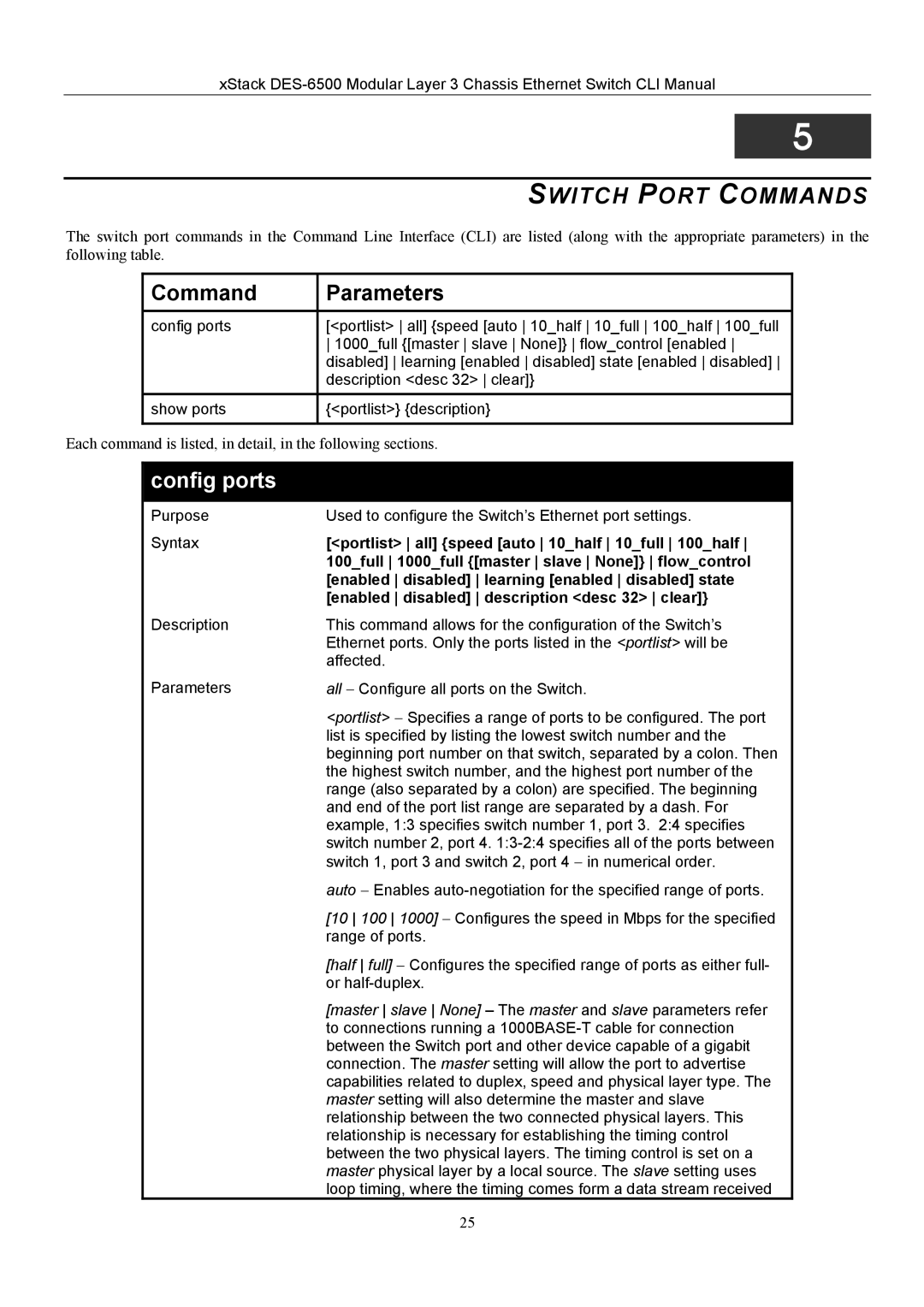
xStack
5
SWITCH PORT COMMANDS
The switch port commands in the Command Line Interface (CLI) are listed (along with the appropriate parameters) in the following table.
Command | Parameters |
config ports | [<portlist> all] {speed [auto 10_half 10_full 100_half 100_full |
| 1000_full {[master slave None]} flow_control [enabled |
| disabled] learning [enabled disabled] state [enabled disabled] |
| description <desc 32> clear]} |
|
|
show ports | {<portlist>} {description} |
|
|
Each command is listed, in detail, in the following sections.
config ports
Purpose | Used to configure the Switch’s Ethernet port settings. |
Syntax | [<portlist> all] {speed [auto 10_half 10_full 100_half |
| 100_full 1000_full {[master slave None]} flow_control |
| [enabled disabled] learning [enabled disabled] state |
| [enabled disabled] description <desc 32> clear]} |
Description | This command allows for the configuration of the Switch’s |
| Ethernet ports. Only the ports listed in the <portlist> will be |
| affected. |
Parameters | all − Configure all ports on the Switch. |
| <portlist> − Specifies a range of ports to be configured. The port |
| list is specified by listing the lowest switch number and the |
| beginning port number on that switch, separated by a colon. Then |
| the highest switch number, and the highest port number of the |
| range (also separated by a colon) are specified. The beginning |
| and end of the port list range are separated by a dash. For |
| example, 1:3 specifies switch number 1, port 3. 2:4 specifies |
| switch number 2, port 4. |
| switch 1, port 3 and switch 2, port 4 − in numerical order. |
| auto − Enables |
| [10 100 1000] − Configures the speed in Mbps for the specified |
| range of ports. |
| [half full] − Configures the specified range of ports as either full- |
| or |
| [master slave None] – The master and slave parameters refer |
| to connections running a |
| between the Switch port and other device capable of a gigabit |
| connection. The master setting will allow the port to advertise |
| capabilities related to duplex, speed and physical layer type. The |
| master setting will also determine the master and slave |
| relationship between the two connected physical layers. This |
| relationship is necessary for establishing the timing control |
| between the two physical layers. The timing control is set on a |
| master physical layer by a local source. The slave setting uses |
| loop timing, where the timing comes form a data stream received |
25
